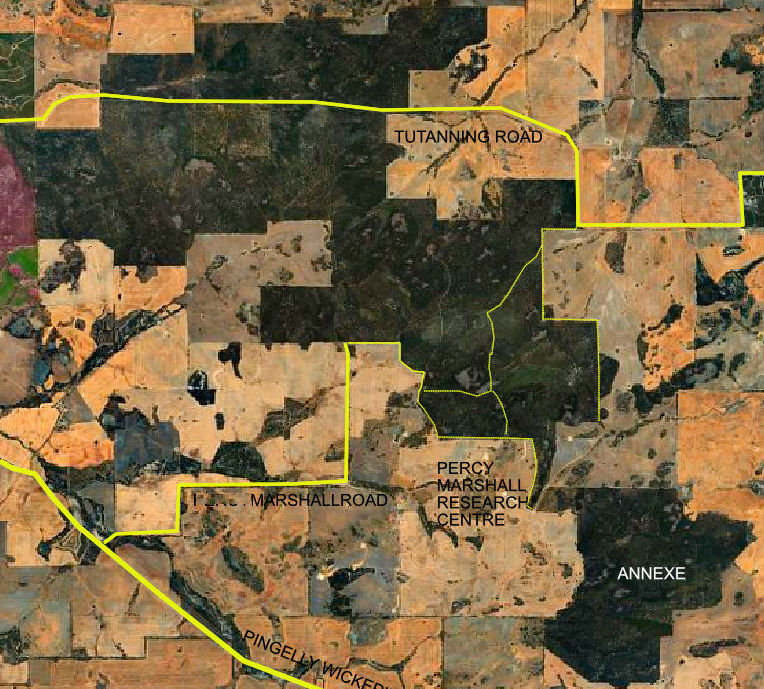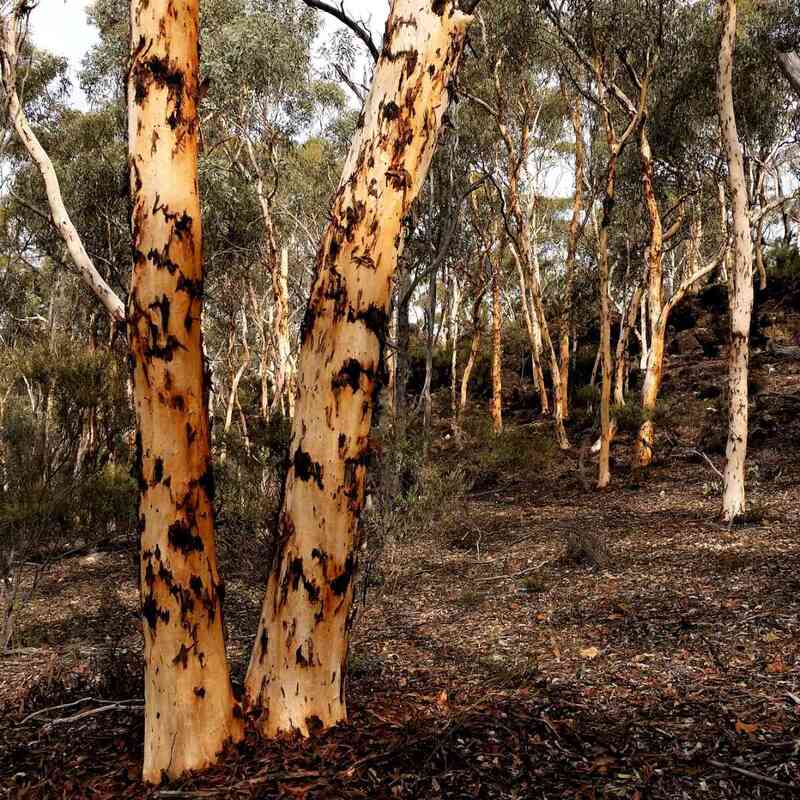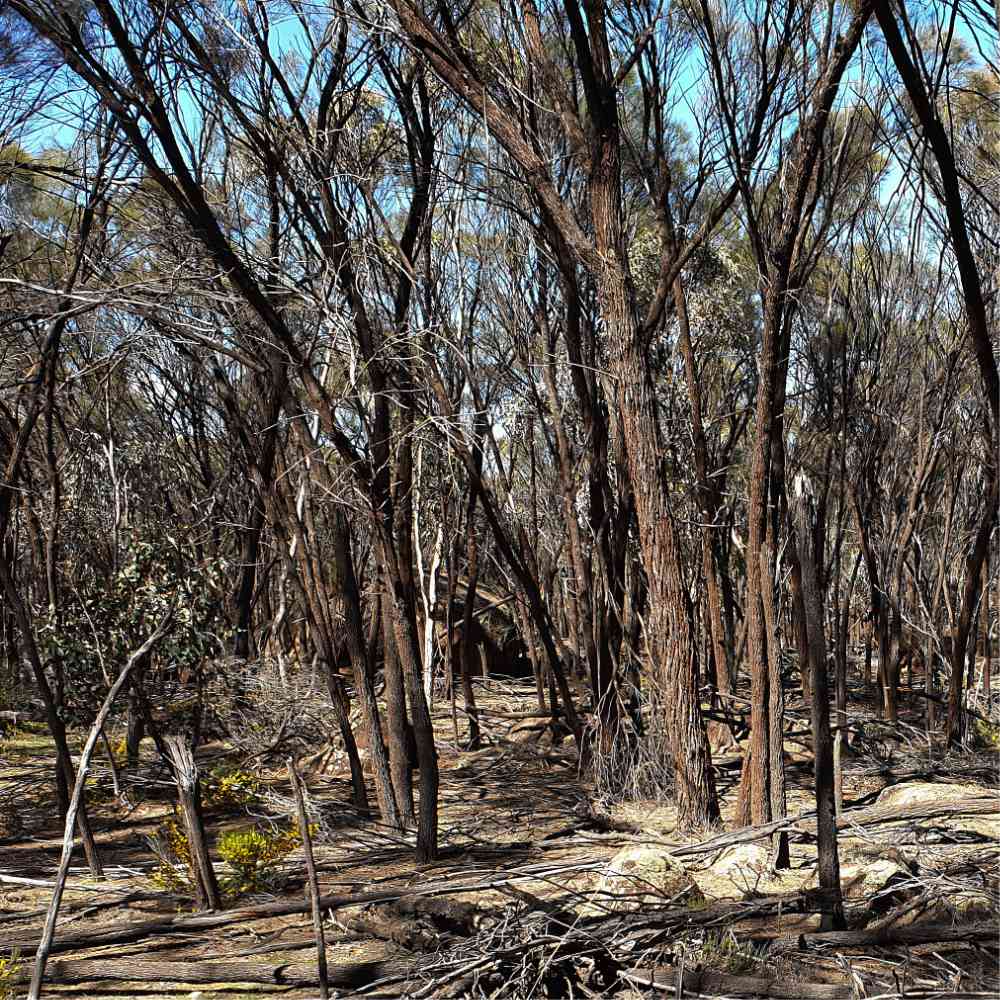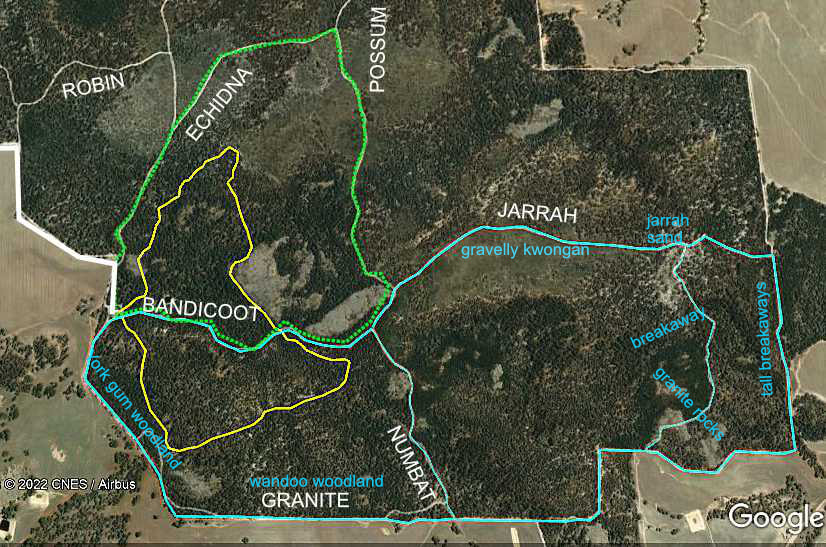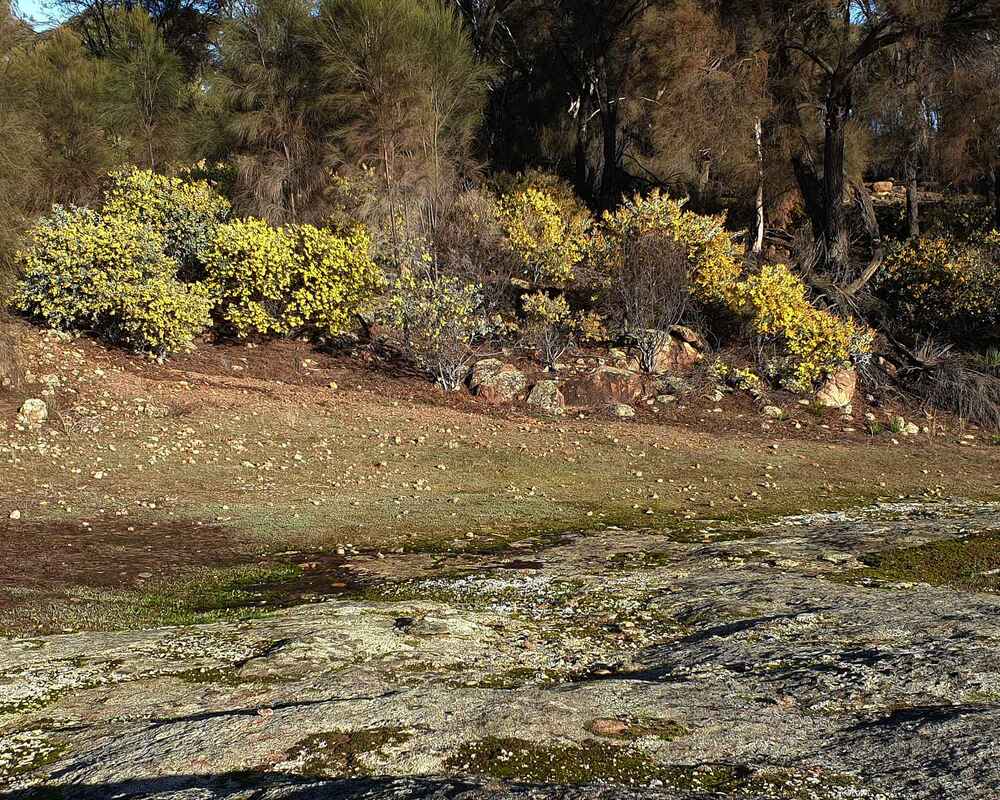It is a great place to
- Enjoy the peacefulness and solitude of a secluded area with basic facilities.
- See a wide range of plants, animals and birds.
- Walk the Tutanning walk trail and internal roads
- Go spotlighting for animals on foot or by 4WD vehicle.
- Drive or ride your mountain bike on internal roads. 4WD vehicles with good clearance are strongly recommended when driving in the reserve. Internal roads are narrow and often rough, with some very sandy and rocky sections.
As this is a class A nature reserve,camping and pets are not permitted.
See this website for more information on accommodation and activities at Tutanning
This blog describes the southern part of the main block, which is easily accessable from the house and is fairly representative of the reserve.
 Major soil categories
Major soil categories Soil and landscape variability underpins the amazing 750 species of native plants, and the many birds and animals in the reserve. Diversity is greatest in the upland kwongan heathlands, which have mixed shrub communities.
Vegetation is a good indicator of soil type, although Rock Sheoak trees (Allocasuarina heugelii) are gradually invading other plant communities
|
The map below shows internal roads and the walk trail. The roads are fire access tracks, which are annually maintained, and many no longer have signposts. My 2-wheel drive ute can negotiate most of them, but some sections marked in red are only suitable for 4WDs. Many are narrow, rutted and stony and it is difficult to turn around if a problem is encountered. If you are unsure, it is a good idea to walk or ride your bike ahead to avoid getting stuck. I get good WIFI reception with my Telstra phone , but the nearest reliable assistance is in Pingelly.
As the southern section, which is mainly lateritic breakaway and gravel country is more difficult and has less wildflowers, many prefer to only walk the northern section and return via Bandicoot Road (2.2km).

